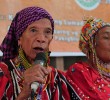MANILA � In a bid to create a more child-sensitive media environment, the United Nations Children�s Fund (Unicef) commissioned research studies that verified Philippine media�s adherence to the guidelines promulgated by the Department of Justice (DOJ) in 1999.
The studies, which covered print and television in Metro Manila, Cebu City and Davao City, uncovered that the media guidelines are being violated. The Asian Institute of Journalism and Communication (AIJC) and the Center for Media Freedom and Responsibility (CMFR) conducted the research.
During the 5th Unicef-Philippine Press Institute (PPI) Child-Friendly Newspaper and Journalist Awards held recently, Colin Davis, Unicef Senior Programme Officer, cited one of the most disturbing finding in the studies.
�Most of the editors interviewed said they have a tendency to avoid stories involving children because of the perceived complications it entails.� A possible reason could be their lack of knowledge on the guidelines, which was another research finding.
In extreme cases, some journalists expressed that they have not even heard of the guidelines. Those who have heard of the guidelines had never seen them while some have attended training on the guidelines.
Confidentiality of the children�s names and other information had also been breached. This could lead to their identification and result in compromising their safety and privacy, whether the children are the victims, witnesses or aggressors in the case.
�The full names of child abuse survivors and children in conflict with the law were sometimes published, or enough details about their parents, residence or schools were given so that their identities could be pieced together,� Davis said.
Other findings in the research studies are as follows:
� Judgmental words such as �drunk�, �epileptic�, �fugitive�, �escapees� and �rugby addicts� were used to described children;
� Children are continued to be featured in articles for fund-raising purposes, which may result in potential exploitative situations;
� Only few articles attempted to raise awareness of the causes and problems affecting children, and there was no offer of causes and possible solutions;
� Interviews of children were rare and on occasions that they were interviewed, these were unsupervised by adults; and,
� Majority of the reporters did not abide by the journalistic standard of using two or more sources of information in developing their stories.
�The research findings may paint a grim picture on one hand. However, it also provides us the opportunity to set clear directions for our future work on the other hand. And that is to improve journalism, in general and journalism on children�s issues, in particular,� Davis added.
Unicef is working closely with PPI, AIJC and the Philippine Information Agency (PIA) to address the issue. The annual Unicef-PPI Child-Friendly Newspaper and Journalist Awards, for one, aims to encourage the participation of journalists as catalysts and advocates of child rights.
In addition to this, Unicef and PPI are organizing a series of training-workshops for journalists on the media guidelines of DOJ and PPI�s guidelines in reporting on children. PIA and the Council for the Welfare of Children are likewise scheduling activities to raise media practitioners� awareness of children�s rights.
Below is a summary of DOJ�s �Guidelines for Media Practitioners on the Reporting and Coverage of Cases Involving Children� available in the department�s Information Division:
� Recognize that freedom of expression and the public�s right to information should go hand in hand with other fundamental human rights, including freedom from exploitation and intimidation;
� Observe that in all media coverage involving children their best interests shall be the primary and paramount concern and that they should take into consideration the present, as well as the long-term implications of any publicity on the child�s recovery and rehabilitation;
� Adhere to the highest ethical and professional standards in reporting and covering cases involving children. (Unicef)










